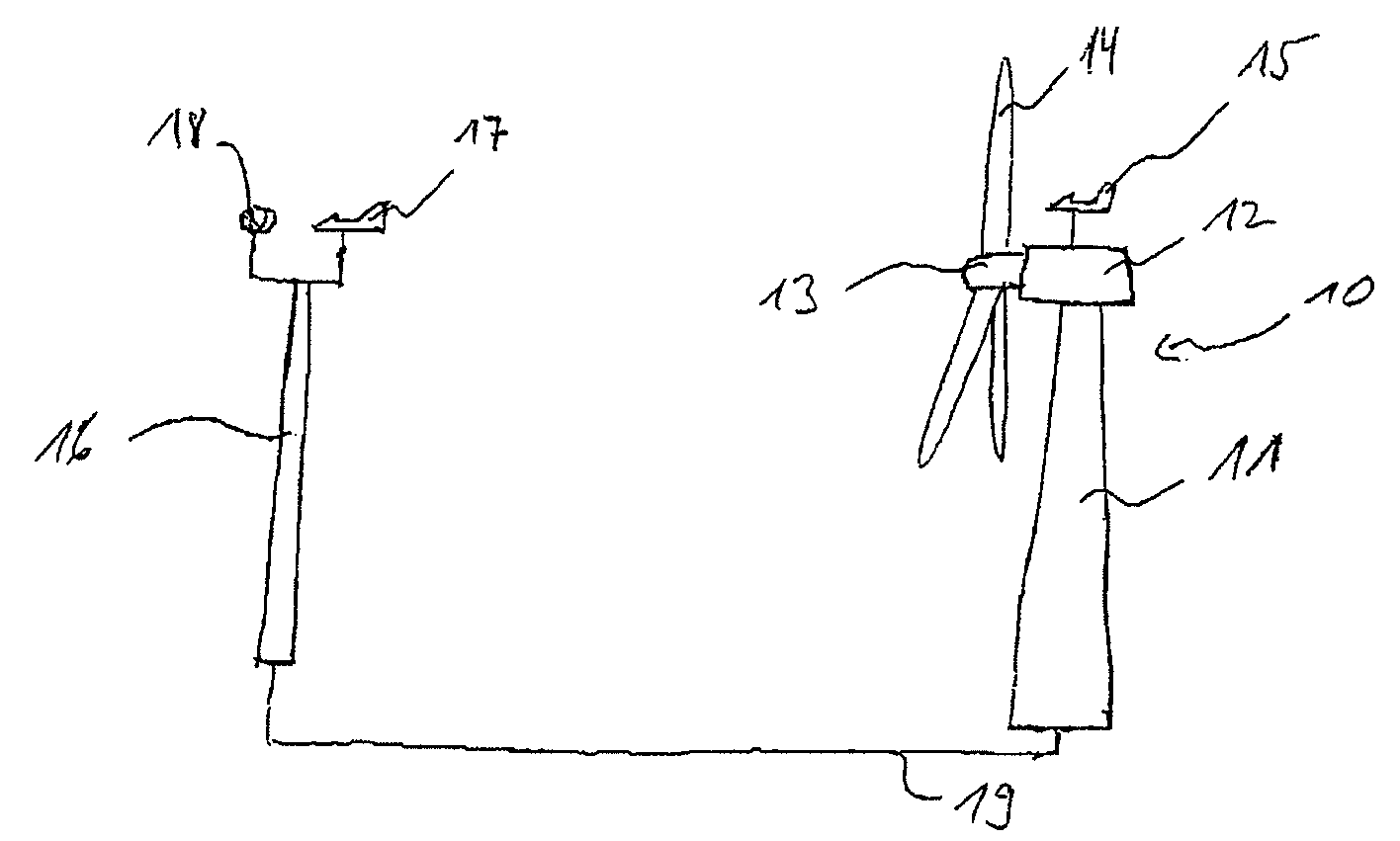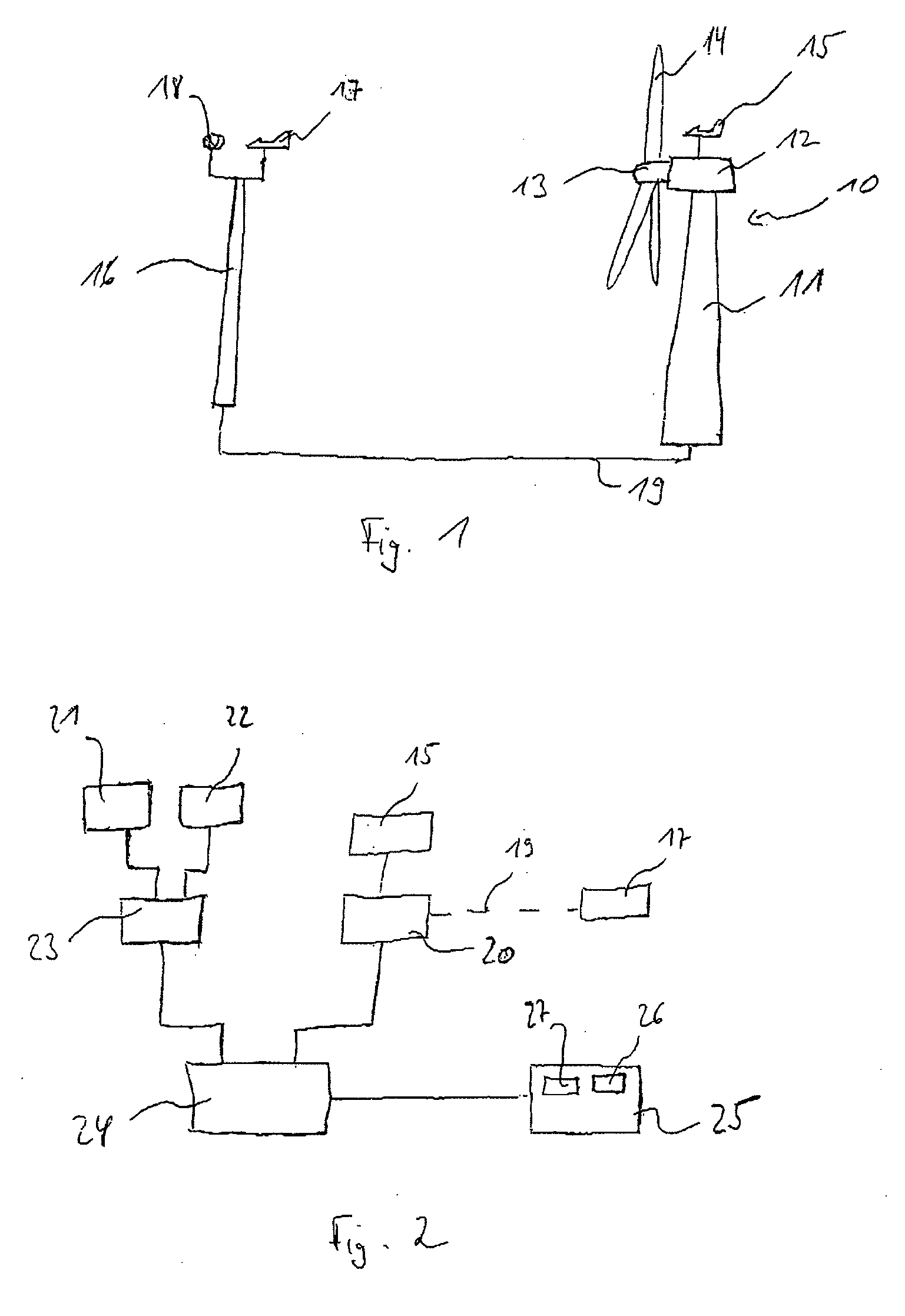Method and system for operating a wind energy installation
a technology for wind energy installations and wind power generators, applied in the direction of machines/engines, electric generator control, final product manufacture, etc., can solve the problem of difficult to precisely measure the wind speed, and achieve the effect of reducing the rotation speed and maximizing the energy yield
- Summary
- Abstract
- Description
- Claims
- Application Information
AI Technical Summary
Benefits of technology
Problems solved by technology
Method used
Image
Examples
Embodiment Construction
[0035]A wind energy installation 10 in FIG. 1 comprises a pod 12 which is arranged on a tower 11 and has a rotor 13. The rotor 13 comprises three rotor blades 14 whose pitch is variable, in order to control the rotation speed of the rotor 13. A wind direction gauge in the form of a wind vane 15, possibly as well as a wind strength gauge, which is not illustrated, in the form of an anemometer, are or is fitted to the pod 12.
[0036]A mast 16 is erected in front of the wind energy installation 10, and a further wind vane 17 and wind strength gauge 18 are arranged at the top of this mast 16. The measured values of the wind direction gauge 17 and of the wind strength gauge 18 are recorded and are transmitted via a cable 19 to the wind energy installation 10. As an alternative to the measurement mast, it is also possible to use ground-based appliances which can measure the wind speed at the hub height (for example Lidar or Sodar).
[0037]According to FIG. 2, an evaluation unit 20 is arranged...
PUM
 Login to View More
Login to View More Abstract
Description
Claims
Application Information
 Login to View More
Login to View More - R&D
- Intellectual Property
- Life Sciences
- Materials
- Tech Scout
- Unparalleled Data Quality
- Higher Quality Content
- 60% Fewer Hallucinations
Browse by: Latest US Patents, China's latest patents, Technical Efficacy Thesaurus, Application Domain, Technology Topic, Popular Technical Reports.
© 2025 PatSnap. All rights reserved.Legal|Privacy policy|Modern Slavery Act Transparency Statement|Sitemap|About US| Contact US: help@patsnap.com



